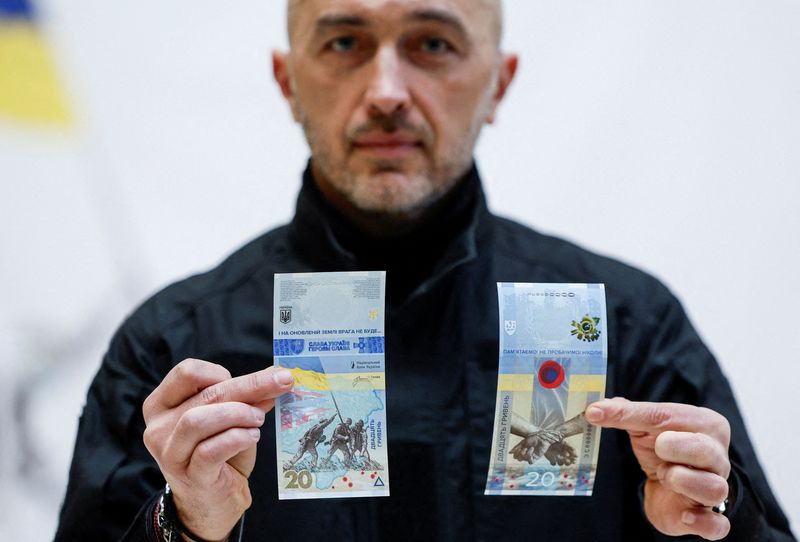By Olena Harmash
KYIV (Reuters) - Ukraine's central bank is pressing on with reforms to fully digitalise the financial sector despite Russia's invasion, and is about to make a "once in a generation" change to improve its electronic payment system.
The bank and the government have faced huge challenges to keep the economy afloat and maintain financial stability since Russia launched its full-scale invasion on Feb. 24 last year.
But National Bank of Ukraine deputy governor Oleksiy Shaban said the central bank had started planning for the various contingencies it might face during a war as long ago as 2014, when Russia seized and annexed the Crimea peninsula.
He told Reuters in an interview that scenarios the bank had planned for included problems related to cyber security, currency support and banking stability, and as a result efforts to digitalise the financial sector were advanced.
"The central bank's system of electronic payments (SEP) is moving to a new standard from April 1," Shaban said of plans to migrate to the ISO 20022 global standard for financial information on Saturday.
ISO 20022 sets a new international standard for sending enhanced data and is intended to create a single common language for most payments globally.
"Imagine, the country, which is in the active phase of the war, will move to a new payment standard," Shaban said.
"It's something that happens once in a generation. We are doing it and we are certain that we will succeed. I mean 'we' as the central bank and the entire banking system."
FIRST DAYS OF THE WAR
In the first few days of Russia's war in Ukraine, the central bank had to ensure there was enough monetary liquidity because demand for cash surged because of the uncertainty.
"From late February to early March (2022), we put about 57 billion hryvnias ($1.56 billion) into circulation, which represents about 65% of the cash amount that we put into circulation during the whole of 2022," he said. "But by the beginning of March, the situation began to change for the better."
Moving on to this year, Shaban said the central bank withdrew 37.3 billion hryvnias from circulation in the first two months of 2023.
Central bank data showed the amount of cash in circulation at the end of March was 679.5 billion hryvnias, and the monetary base stood at 874.2 billion hryvnias as of March 28.
Another threat to the financial system has come from Russian air strikes on energy infrastructure. The central bank reacted by creating a "power banking" network to unite branches of banks able to operate when electricity and the internet are disrupted.
Shaban described the power banking network as "our armour" and said it had been an important factor in boosting confidence, improving sentiment and ensuring business continuity.
Most Ukrainian banks have joined the project -- 2,341 bank branches, or about a half of all branches, are part of the network.
"During the war we are devoting more resources to increasing the resilience of the (financial) system, given the current challenges. But the processes are underway," Shaban said.
"In addition to the fact that we are moving to the ISO 20022 standard, the SEP will work round the clock. This standard is the foundation for further changes to the payment infrastructure."

The central bank and commercial banks are also working towards the introduction of 'open banking' in 2025 -- under which banks and other traditional financial institutions will give customers and third parties easy digital access to their financial data.
Shaban said this would help develop more fintech services in Ukraine, create better access and provide cheaper services.